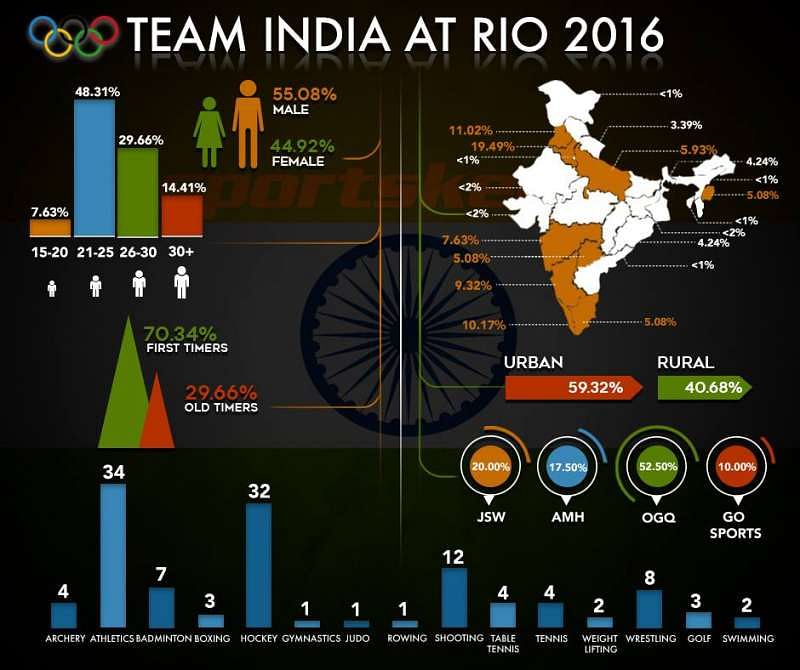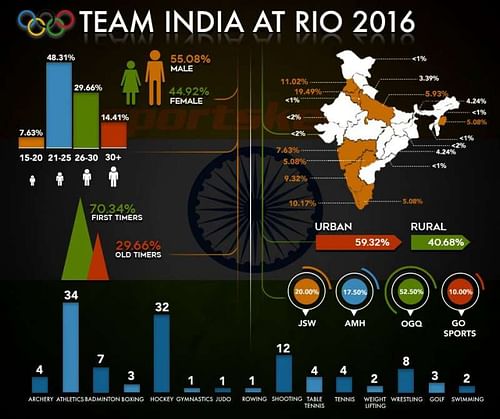
India at Rio Olympics 2016: All you need to know about the Indian contingent
Rio 2016 is almost upon us and the excitement is unparalleled. This time, India sees its highest ever representation at the quadrennial world championships and expectations are inevitably high.
India's participation in the Olympics began in 1900 when the contingent comprised of just one athlete in the games that were held in Paris. Needless to say, we have come very far since then.
It is interesting to note that this year, the disparity between male and female representatives has evened out a little compared to what it was four years ago. For London 2012, out of the 83 players who had represented the country, 60 were male (nearly 72.29%). The gender divide seems to have happily resolved itself now; with the 118 athletes who have qualified for Rio, the female representation has risen from 27.71% in 2012 to 44.92% in 2016.
And that is just the tip of the iceberg. The women's hockey team has qualified for the prestigious competition for the first time in 36 years. There are also expectations of good performances in categories like rowing and gymnastics where one Indian each has managed to qualify.
Also read: Rio Olympics 2016: Indian qualification list
Nearly 55.93% of the squad members are between the ages of 15 and 25, which implies that they have age on their side and would have no difficulty in representing the country for at least two more Olympics. This is very encouraging for the state of Olympic sports in India.
Given the unprecedented largeness of the group, it is not surprising that most of the members and athletes are first timers at the Games. 35 athletes have represented India at the Olympics before, which means 70.34% of the contingent are first-timers. But the relative inexperience does nothing to deter the high hopes the country has this time.
Athletics, as usual, has the highest representation among all the categories; the 34 athletes make up for nearly 28.81% of the participation in the squad. On the other hand judo, gymnastics and rowing have one participant each.
The economic disparity among the qualifying members is noticeable with most of the players having emerged from backward classes or poverty-ridden conditions to achieve this position of absolute glory. 40.68% of the contingent have been nurtured in rural and economically backward conditions. That just goes on to reinforce the fact that true success in Indian sports comes from determination more than anything else.
Haryana and Punjab have given India the most number of international level athletes though the difference in contribution between the two states is quite high. With Haryana's culture of wrestling and active physical sports, the state has produced 23 members of the squad (19.49%), followed by Punjab and Tamil Nadu who have 13 and 12 representatives respectively.
Olympic Gold Quest have emerged as the leading not-for-profit organisation and supporter of world-class athletes. Out of the 37 athletes funded by the various not-for-profit groups, 21 are supported by OGQ, 8 by JSW Group, 7 by Anglian Medal Hunt and 4 by GoSports.
